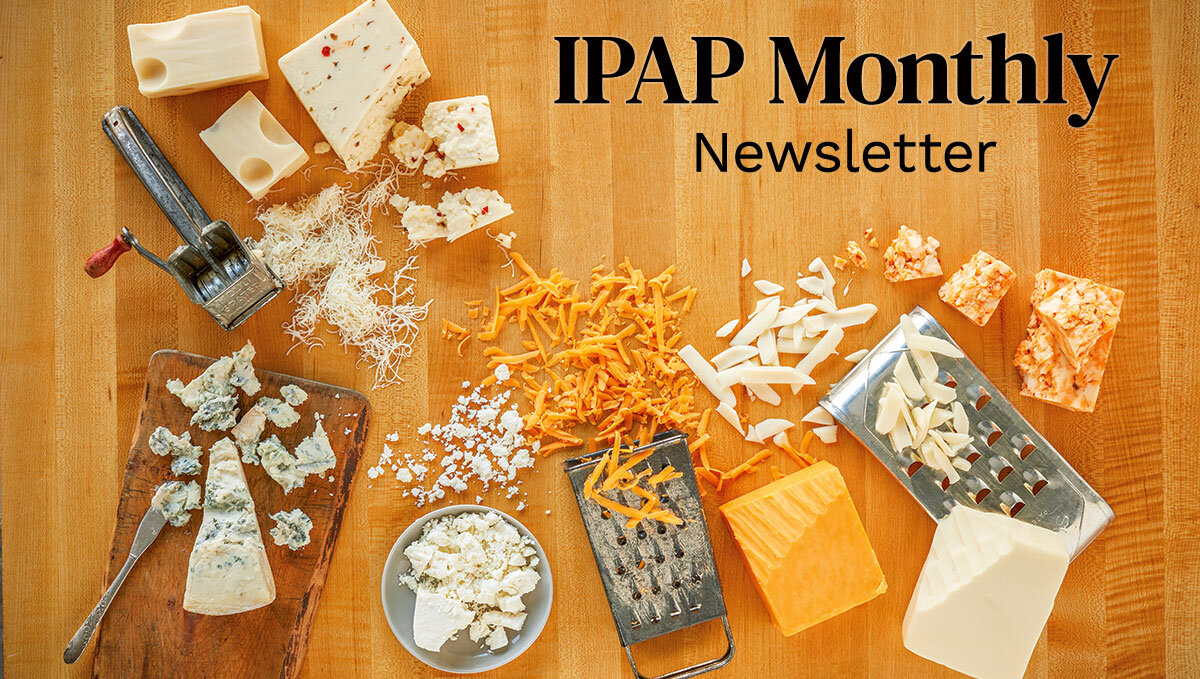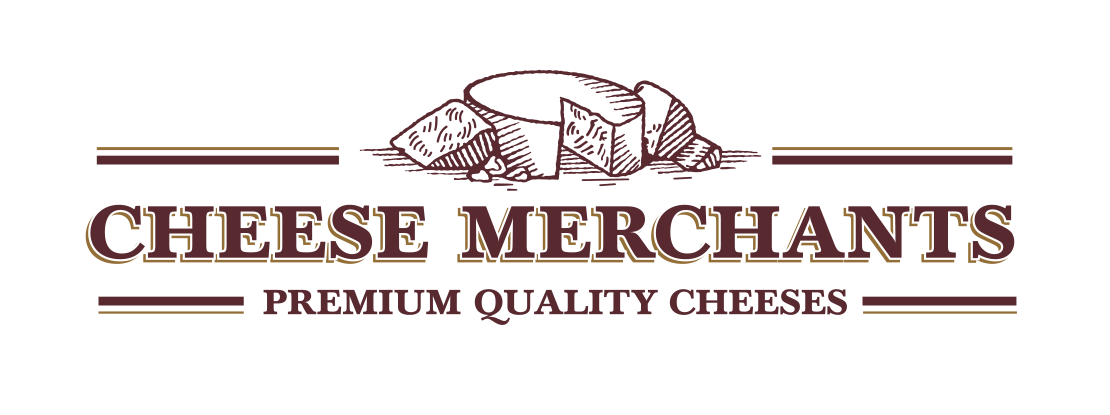

Asiago is an Italian hard-style cheese that packs different flavors depending on its age.

Fresh Asiago is smooth to the touch and tastes sweet, like fresh milk, with small hints of sourness. Aged Asiago, on the other hand, is crumbly and reminiscent of sharp cheddar and Parmesan cheese. It sports a strong, savory and piquant flavor.
Asiago originated in northeastern Italy’s mountainous Veneto region. Here in the United States, Cheese Merchants sources the finest quality Asiago cheese made in Wisconsin. Cheese Merchants’ Cucina Andolina line is a medium-texture cheese produced with cow’s milk and aged for at least six months. The result is a sweet, slightly tangy and pleasant flavor.
Asiago cheese is satisfying whether consumed on its own or paired with other foods. Here are some suggestions for enjoying Asiago:

- Serve on salad, soup, deli sandwiches or pasta.
- Bake a sundried tomato and Asiago cheese bread.
- Whip up a hot Asiago spinach dip for enjoying chips and crackers.
- Broil some Asiago toasted cheese puffs.
- Slice Asiago alongside other cheese varieties of your choice, served on a platter.
- Add creaminess to oven-baked chicken breasts by melting Asiago cheese on top (mushrooms are another good mix-in).
- Dairy Farmers of Wisconsin recommends pairing it with alcoholic beverages such as hard ciders, pilsner and pale ale beers, pinot gris and Riesling wines and scotch.
- DFW also gives the thumbs-up to a sweet dessert combination: Asiago cheese, walnuts, dried apricots and honey.
Cheese Merchants’ Cucina Andolina Asiago cheese is distributed in pack sizes of 20 lb. Black Wax Wheel (IPAP #062701) and 2/5 lb. Asiago Regular Shred (IPAP #030101). It is also available grated and shaved. For more information, contact your IPAP Account Manager.

The warm summer sun and outdoor spaces—patios, courtyards, downtown sidewalks—worked in tandem as lifelines to many restaurant operators this year.
Unfortunately for these hard-working professionals, Mother Nature is putting them on defense in all but the southernmost parts of the country. The weather is cooling down and uncomfortable temperatures lie ahead. With an end to the pandemic nowhere in sight (and cases flaring up in states like Wisconsin), one question on restaurant owners’ minds is whether to send their customers indoors for the winter or strategize ways to keep them outside.
Grub Street summarized the challenges presented by the changing of the seasons. Although the following paragraph pertains to New York City—where by law dining must occur outside until September 30, when restaurants can resume indoor service at up to one-quarter capacity—these problems cross city and state borders:
Operators who spoke to Grub Street say reopening at 25 percent capacity does not by itself solve their problems. It allows for social distancing among diners but can’t promise total safety, especially among staff. Standard kitchen-safety protocol does not usually encompass the dangers of inhaling the air. Twenty-five percent capacity lets restaurants recoup some fraction of their pre-pandemic business but often not enough to break even, let alone come out ahead. Meanwhile, the rent continues to come due.
About half of full-service operators plan to draw out the 2020 outdoor dining season for as long as possible, according to the National Restaurant Association. The NRA found, on average, 44% of full-service operators’ daily restaurant sales come from outdoor dining.
There are items on the market to help outdoor dining continue.
- The most basic solutions include electric space heaters and blankets (the latter being hygienic if customers get to keep the blankets or bring their own from home).
- Installations that could require more coordination but could work include fire pits and rental tents.
- Highly complex options include greenhouses and igloo domes for small groups. Restaurants have adopted these fixtures in recent years as premium rental units. It is unlikely a restaurant could afford to purchase a whole yard’s worth of these $1,000-some igloos and expect to serve the number of customers they would on a busy Friday night without igloos, but by charging users a rental fee, they could make up lost revenues for fewer food sales.
Restaurants could also enclose their existing outdoor patios by installing window panels or blinds. If they enclose it too much, however, they risk turning the space into a glorified indoor dining room. Ventilation is crucial to prevent spread of the virus. Leaving openings for air flow and, again, installing space heaters create a comfortable semi-outdoor space.
Some restaurants may find it easier to bring all of their business inside. They may turn to socially distanced indoor dining if they haven’t been doing it already. By taking safety measures such as reducing their seating capacity to 25–50%, spacing out the tables and alternating booths, they can reduce the virus’ spread.
Alternatively, they could return to the takeout-only practices they mastered last spring. The difference now is states are not under governor’s orders forbidding on-site dining. One establishment reverting to the less-profitable, takeout-only approach could fall behind its competitors quickly.
The City of Chicago is among those working to develop an answer to this wintertime dilemma. Mayor Lori Lightfoot launched a public design challenge to think up “innovative outdoor dining solutions that adhere to COVID-19 protocols.” The hundreds of entries included fire pits in the center of tables, portable “StreetPod” structures that fit inside parking stalls, space heaters underneath blanketed tables (common in households abroad), and heated light-up stools. The top ideas will be announced in early October. Perhaps it will be the creativity of Chicagoans that helps keep American restaurants in business through next year and beyond.

Are you a master of all things cheese and dairy?
With school back in session, IPAP’s September quiz focuses on dairy in education. Grab a No. 2 pencil, get to work and keep your eyes on your own paper. Answers appear below the Dairy Dive.
1. Federal guidelines allow which type of milk to be served to children in public schools?
A) Whole milk
B) 1% chocolate milk
C) 2% milk
2. Which prominent figures were FFA members as children?
A) Jimmy Carter, Bo Jackson and Taylor Swift
B) Jeff Daniels, John Roberts and Carrie Underwood
C) Sarah Palin, Steve Martin and Bill Nye
3. The high standards to get accepted into the Master Cheesemaker advanced education program include:
A) Owning a cheese factory or dairy farm
B) Being the child or descendant of a cheesemaker
C) Being an active licensed Wisconsin cheesemaker for 10 years
4. The American Cheese Society’s test to become a certified Sensory Evaluator includes identifying the smells of cheeses. Which odor is not listed on the scoresheet as a category of aroma defect?
A) Barnyard
B) Unpleasantly Earthy
C) Putrid
5. Williams College in Massachusetts is home to what unique mascot?
A) The Purple Cow
B) The Big Cheese
C) The Mighty Milkman

Recent headlines about cheese, milk and foodservice from around the web.
- Struggling Kraft Heinz sells dairy brands to Lactalis (The Associated Press)
- Burnett Dairy Co-Op Back On Track After Fire (WCCO)
- Nearly One in Six Restaurants May Have Closed, Survey Finds (Grub Street)
- Why cheese has become so popular in the U.S. (CNBC)
- Midwest Dairy Farmers Want Help To Expand Trade (St. Louis Public Radio)
- Food box deliveries to needy California seniors cut off because of USDA cheese rule (Los Angeles Times)
- US cheddar cheese in Europe’s trade mousetrap (The Hill)
- How to make the perfect cheese board for any special event (Business Insider)
- Warrior skeletons reveal Bronze Age Europeans couldn’t drink milk (Science)
- So You Think That Cheese Is Top Quality? Taste May Not Be The Reason (Forbes)
- What’s Stopping NYC Restaurants From Offering Outdoor Dining Year Round? (Gothamist)
- Your “Expired” Milk Still Has So Much More to Give (Bon Appétit)
Quiz Time answers
1. Federal guidelines allow which type of milk to be served to children in public schools?
B) 1% chocolate milk
2. Which prominent figures were FFA members as children?
A) Jimmy Carter, Bo Jackson and Taylor Swift
3. The high standards to get accepted into the Master Cheesemaker advanced education program include:
C) Being an active licensed Wisconsin cheesemaker for 10 years
4. The American Cheese Society’s test to become a certified Sensory Evaluator includes identifying the smells of cheeses. Which odor is not listed on the scoresheet as a category of aroma defect?
C) Putrid
5. Williams College in Massachusetts is home to what unique mascot?
A) The Purple Cow
